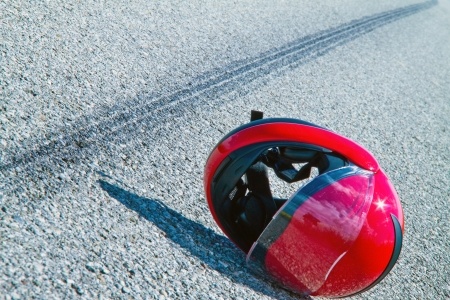

Common Summer Accidents
Summer is here and that means big changes for the flow of traffic with more teenagers and families on the roads. Increased traffic is a risk factor for car accidents on its own but when you add in additional teenage drivers who are at the highest risk for being in a car accident, summer becomes a much more dangerous time to be on the road. The fatality rate for drivers aged 16 to 19 is four times higher than that of drivers aged 25 to 69 years. Other common types of summer accidents are motorcycle accidents, swimming accidents, boating accidents, playground accidents and amusement park accidents.
(more…)
Read More

Dirt Bike Accidents
Many people are drawn to the dare-devil aspect of off road biking but each year hundreds of children and adults are killed or injured in accidents involving a motorcycle, dirt bike, trail bike, moped, motor-scooter or mini-bike. Between 2001 and 2004, an estimated 500,000 people were in dirt bike accidents and 75 percent of those injured were hospitalized. In 2003 alone, dirt bike and motorcycle accidents accounted for 245 deaths among children and teens under the age of 19 and almost 57,000 trips to the emergency room to treat injuries.
CDC study on Dirt Bike Injuries:
- The majority of injured children are male.
- The majority of injuries involved a dirt bike/trail bike.
The six most common non-fatal injuries endured by youth riding a motorcycle, dirt bike, trail bike, moped, motor-scooter or mini-bike between 2001 and 2004 were:
- Fracture 7,282 (30.6%)
- Contusion/Abrasion 5,565 (23.4%)
- Laceration 3,893 (16.4%)
- Strain/Sprain 2,866 (12.0%)
- Internal injury/Concussion 2,016 (8.5%)
- Burn 562 (2.4%)
Off-road riding motorcycle riding requires physical skills and judgment that most children and young teens do not yet possess. In 2000, the American Academy of Pediatrics recommended that parents not allow their children and teens under the age of 16 to ride off-road motorcycles or ATVs and that states prohibit the use of such vehicles by children and teens under the age of 16. Studies of ATV use have shown that state laws with age restrictions for off-road vehicle use are effective in decreasing the number of riders under the minimum age and that requiring off-road riders to wear helmets can reduce the risk of fatal injury. According to the American Motorcycle Association, only 19 states require off-road motorcyclists under the age of 18 to wear helmets and only eight states have set minimum ages (range: 8 to 14 years) for operation of off-road motorcycles.
Dirt bikes are similar to motorcycles but they are designed for off-road riding. Some characteristics specific to dirt bikes are a light weight, narrow body and high-ground clearance for easy jumping and stunts, a long suspension travel for landing jumps, small engines, and large wheels with knobby tires. Dirt bikes are often modified to suit the needs of the particular sport. For example, in Motocross which is a race over jumps, bikes need a particularly large suspension travel, smaller fuel capacities, and no indicators. Endura racing on the other hand is a long distance travel competition requiring an engine with high speed, a low-weight frame, and no seats since the rider uses a half-sitting position.
Washington State Off-Road Laws
- Eye protection is not required
- Headlights are required after sunset
- Maximum Sound Level:
- 86 db(A) measured at 50 feet
- Minimum operator age is 13 except under the direct supervision of a person 18 years of age or older possessing a valid license to operate a motor vehicle.
- Mufflers are required by law
- No operator license is required
- Registration is required by law
- Rider education certification is not required
- Safety helmets are required by Law
- Spark arrestor is required by law
- Taillights are required after sunset
- Trails program is available
- Vehicle title is not required
If you or a loved one were injured in a car accident, you have enough to deal with. Let an experienced accident attorney fight for the full compensation that you deserve. It is not uncommon to receive a settlement from the insurance company that is two to three times bigger with the help of a lawyer. Call the caring accident attorneys at Tario & Associates, P.S. today for a FREE consultation!
Read More

Motorcycle Accidents in Washington State
The thrill of barreling down the open road with the wind in your face draws many people to riding motorcycles but motorcycle accidents are a very real factor to consider before hopping on a bike. A 2006 report by the U.S. National Highway Traffic Safety Administration (NHTSA), found that 13 out of 100,000 cars on the road end up in fatal crashes compared to 72 per 100,000 registered motorcycles. That means that per mile traveled, motorcycle riders have a 35 times greater chance of dying in a crash than do those riding in a vehicle. Data released in 2005 showed that 4,008 motorcycle riders were killed in the United States in 2004, which was an eight percent increase over fatalities in 2003. Incidentally, automobile and bicycle riders also showed about an eight percent increases in fatalities in the same period.
There are over four million motorcycles registered in the United States, which represents two percent of all registered vehicles in the country. Despite this fact, motorcycle fatalities represent approximately five percent of all highway fatalities each year. One of the main reasons motorcyclists are killed in crashes at such high rates is because motorcycles do not provide a physical barrier between the rider and the road. Approximately 80 percent of reported motorcycle crashes result in injury or death compared to 20 percent for automobiles.
Washington State Laws for On-Road Motorcycle Use
- Accepts motorcycle endorsements from other states
- Daytime use of headlights is required
- Modulating headlight permitted
- Eye protection is required unless bike is equipped with windscreen
- The handlebar can be no more than 30″ above the seat
- No restrictions on helmet speakers
- Lane splitting is not authorized
- Covered under lemon laws
- Maximum A-weighted sound level as measured at 50 feet:
- 78dBA at 45mph or less
- 82dBA over 45mph
- Stationary 20 inch standard on models before 1986–99dBA
- Left and right mirrors required (see statute R.C.W. 46.37.530 for special exceptions)
- Motorcycle endorsement required*
- Motorcycles may ride two abreast in same lane
- Mufflers are required
- Passengers under the age of 5 are prohibited
- A passenger footrest is required if carrying a passenger
- A passenger seat is required if carrying a passenger
- Random, periodic safety inspections required
- No restrictions on radar detectors
- Rider education is available for all eligible applicants but it is required for those under the age of 18. A rider education waiver may be granted upon passing a skill and knowledge test.
- Safety helmets are required
- Motorcycle insurance not required
- Turn signals are required if bike came equipped with them
*Getting your Motorcycle (2 wheel) Endorsement or Permit in Washington State
There are two ways to get a 2-wheel motorcycle endorsement in Washington State:
1. Complete and pass a motorcycle safety course through an approved motorcycle training school:
- The safety course will include training and the knowledge and riding skills tests required to get your endorsement.
- Once you pass the safety course, you must bring your course completion card to any driver licensing office within 180 days to receive your motorcycle endorsement.
2. Pass the knowledge and riding skills tests:
- An approved motorcycle training school can administer the test.
- Once you pass the knowledge test, you can apply for an instruction permit to ride on public roads. To apply for a permit, bring your pink test score sheet to a drivers licensing office.
- After you pass the knowledge and riding tests, bring your green score sheet to any driver licensing office within 180 days of passing the tests to receive your motorcycle endorsement.
If you or a loved one were injured in a car accident, you have enough to deal with. Let an experienced accident attorney fight for the full compensation that you deserve. It is not uncommon to receive a settlement from the insurance company that is two to three times bigger with the help of a lawyer. Call the caring accident attorneys at Tario & Associates, P.S. today for a FREE consultation!
Read More

Why is my Personal Injury Case Dragging on and on?
Every personal injury situation is different and complicated in its own way. It can take two or more years for a complete investigation that can yield the compensation you seek. Although some personal injury cases are settled more quickly than others, it is in your best interest to be patient as an initial insurance settlement offer is usually not the best one you’ll get. If you have been injured in a car accident, it would be wise to hire a personal injury lawyer to fight for your case and help advise you when to settle.
Steps to Resolve a Personal Injury Case
- Medical Injury Evaluation – In a serious case, it can take a year or more to evaluate the severity or permanent nature of an injury but it is best to wait for the evaluation.
- Legal Steps – Your accident lawyer will keep your case moving forward by following these standard steps.
- Discovery – the discovery period can last up to six months and gives both parties an opportunity to gather information, exchange disclosure statements and other documents such as accident reports, medical records and bills, answer interrogatories (written questions to be answered under oath) and to undergo a medical exam by an independent doctor.
- Deposition – this is where the opposing attorney asks you questions under oath. Expect to be questioned about the accident and resulting injuries and about your personal background and life before the accident. Your accident attorney will prepare you for the deposition and defend you against irrelevant or harassing questions.
- Pre-Trial Motions – attorneys may file a motion (or many) to narrow the issues to be discussed at trial. A motion could deny certain evidence from being revealed or even ask that a case be dismissed due to lack of evidence.
- Mediation, Settlement or Arbitration – it is often required that mediation or settlement conferences occur before a case goes to trial. A neutral mediator will go over the issues with both parties to help guide them to a settlement. In contrast, an arbitrator acts as a judge to listen to the evidence and then decide the outcome of the case.
- Trial – If mediation is unsuccessful your case will go to trial where a jury will decide the value of your injury. It could take up to six months to get a trial scheduled and the trial could last two days to two weeks. Even after a trial, further appeals or motions could be filed. It is also possible that the parties could settle out of court even at this time.
Your best bargaining power is to be patient while weighing the expense of litigation and trial. It may or may not turn into your best interest to settle in mediation so it is important to have a personal injury lawyer representing and guiding you. You may have many questions for your personal injury attorney including how long the case will take to resolve once medical and insurance experts have investigated your accident and injuries, can doctors and hospitals be held off for payment while the case is being resolved or how much compensation is reasonable to expect in your case.
All your questions are legitimate. Hire the experienced personal injury attorneys at Tario & Associates and we will answer all your questions and get the job done right. Contact us today!
Read More